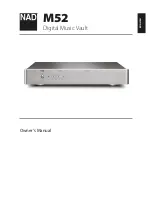Reviews:
No comments
Related manuals for PFM-4000

M52
Brand: NAD Pages: 10

HDT 300
Brand: e+p Elektrik Handels Pages: 2

9010
Brand: KaVo Pages: 49

EX-100
Brand: Easson Pages: 33

Electraray 225
Brand: Federal Signal Corporation Pages: 12

MET ONE 3400 Series
Brand: Hach Pages: 48

STA
Brand: Ognibene Pages: 28

HM303-6
Brand: Hameg Pages: 24

HMP Series
Brand: Vaisala Pages: 118

K4401
Brand: Velleman Pages: 16

VTTEST11
Brand: Velleman Pages: 11

iAquaLink
Brand: Zodiac Pages: 2

enPuls
Brand: Zimmer Pages: 46

AED 3
Brand: ZOLL Pages: 48

CDHT Series
Brand: LSI Pages: 24

KM117B
Brand: Kaiweets Pages: 6

VT200
Brand: Kaiweets Pages: 6

ENIDINE ENI-VIBE 33VC4400B
Brand: Dytran Pages: 2

















